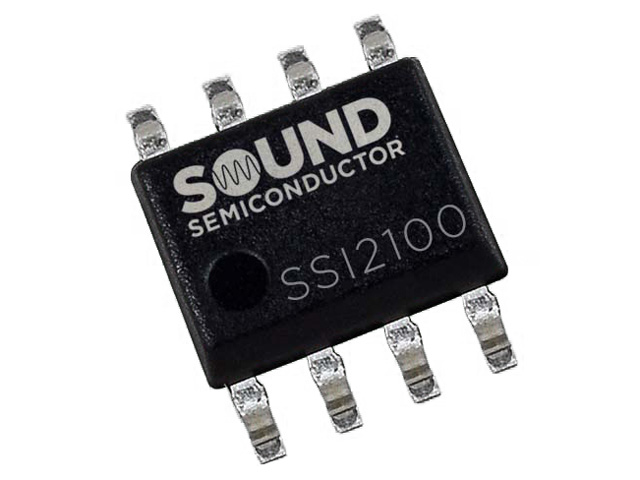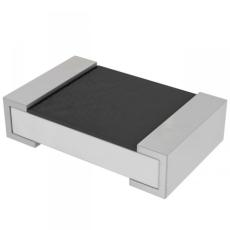Product description
The SSI2100 is a modern BBD (Bucket Brigade Device) delay circuit, the first of its kind in several decades. The circuit is manufactured using modern semiconductor technology, providing better signal quality among other improvements.
Bucket Brigade technology is a cross between analog and digital technology, of sorts. The technique is based on a large number of capacitors and sample & hold circuits. The input signal charges the first capacitor, and with each clock pulse the voltage is passed on to the next capacitor, while the first one receives a new voltage. In this way, the input signal is passed on from stage to stage, and the signal is delayed, until output from the last ”bucket” (capacitor).
The technology means that aliasing effects and clock artefacts may occur in the signal. Band-limiting low-pass filters before and after the BBD are thus recommended (see the excellent datasheet for examples).
The SSI2100 has 512 steps and can handle clock frequencies from 1kHz to a full 2 MHz with maintained performance. Higher clock frequencies provide shorter delays. 1kHz gives a delay of 512ms, while 2MHz delays the signal by 0.256ms (or expressed in another way: 3906 Hz).
Frequencies outside 1kHz-2MHz lead to more distortion and a worsened signal integrity, but should still be usable.
The circuit has several advantages which make it easier to use than older BBD circuits. For instance, it is designed to be used with several devices in series, without any need to calibrate the inputs and outputs. Nor is an external clock driver needed – something which previously was a requirement. The circuit has a TTL/CMOS-compatible clock input that expects a single (non-differential) clock pulse. Another nuisance that has been removed is the need for a negative reference voltage, as one is generated internally.
In addition to the fact that it itself is in a space-saving package, several external circuits and voltage requirements are thus eliminated.
Useful for delay effects, reverb, chorus effects, resonators, synthesis (Karplus-Strong) or to replace obsolete circuits during repairs (with adaptation of input and output voltages, pinout, etc.)
In addition to use in audio electronics, delay circuits have also been used to signals to oscilloscopes (to trigger "before" events).
- Supply voltage: 5V
- Package: SOIC-8
- Number of steps: 512
- Clock frequency: from 1kHz to 2MHz
- Easy to connect in series
- No external clock management required
- Compatible with TTL/CMOS clocks (3.3V/5V)
- No negative supply voltage required
- Bandwidth: at least 15Khz (-3dB)




